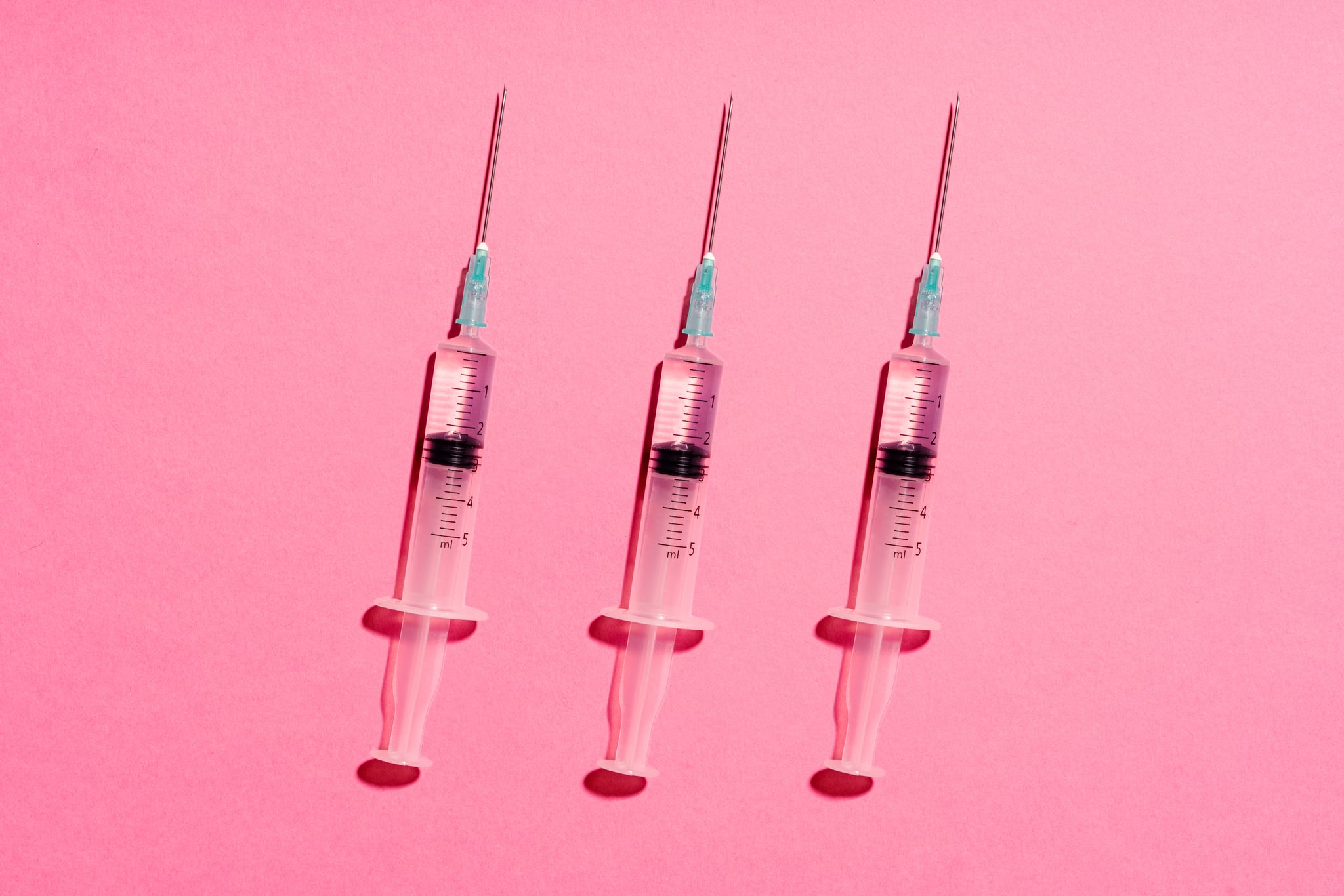
Check out Skinvive, the new FDA approved dermal filler in town. Low Molecular Weight Hyaluronic Acid Gel has a smoother texture than traditional fillers and is FDA-approved to plump the skin of the cheeks for people 21 and older. Board-certified plastic surgeon Ben Talei, MD, describes fillers as "hydrating" fillers used to "hydrate the layers of the skin" and help with things like sagging, texture irregularities, and overall glow. .
Although the treatment is new in the United States, this class of diffuse fillers has been accepted in Europe since 2015, popularized by Profilho products. "The FDA is very strict in this process," says board-certified plastic surgeon Dr. Cat Chang at POPSUGAR. (He adds that most popular cosmetic procedures were approved in Europe before they arrived in the United States.) "We didn't have the tools we needed, and now we have them, which Europe has had for years."
Here we'll cover everything you need to know about the new fillers, including how they work and what they can do for your skin.
How does Skinvive differ from traditional fillers?
The main difference between the two is that traditional fillers are used to add volume, while Skinvive is meant to add hydration, says Dr. Chang. "Skinvive has low G-prime, so it hydrates the skin to improve texture but doesn't add volume."
In terms of formulation, the main difference between excipients lies in molecular weight and viscosity. Hyaluronic acid molecules with higher molecular weight attract more water and produce a denser volume to mimic bone; conversely, lower molecular weight hyaluronic acid molecules have the same hydrophilic effect but are more refined. Depending on where fillers fall on this spectrum, they affect how and where they are used to create volume, highlights and contours on the face.
Low molecular weight fillers like Skinvive and Profilho are much thinner and wider than their counterparts. While they can improve texture, they are not used to create volume.
Who can benefit from Skinvive?
Dr. Chang notes that this type of filler is an excellent choice for patients with wrinkled skin, thin skin, fine lines or texture irregularities. The FDA approval is for the cheek area, but it can also be useful for wrinkled areas around the lips, neck, arms, thighs or hands. dr. Talei says these fillers are injected into the dermis, the area of skin that contains subcutaneous fat and a hydrating layer called the SMAS, the tough, thin layer of facial connective tissue that loosens and sags with age.
"Skinvive is good for people whose skin starts to darken with age [due to loss of subcutaneous fat or dehydration]," says Dr. Talei. "When this happens, your skin reflects light poorly and no longer looks radiant or radiant."
To fix this, the esthetician may recommend injections of nano-fat (ie, fats that are cleared at the cellular level), platelet-rich plasma (PRP) or platelet-rich fibrin (PRF) injections under the skin. , even fat grafting. . "Alternatively, you [now] can add a little bit of this filler under the skin and it draws water, increases radiance and keeps the skin plump."
A better choice for Ozempic Face?
Loss of facial fat occurs naturally as part of the aging process. But there is another interesting trend in Hollywood due to rapid weight loss. The use of known GLP-1 agonists such as Ozempic and semaglutide for weight loss is known to cause facial disfigurement, which is called "ozempic face".
As Dr. Talei pointed out, rapid weight loss also causes dehydration under the skin, which reduces the SMAS and causes the phenomenon described above. So can Skinvive be used for the Ozempic facial?
"It may be one of the best options to manage if someone has an 'ozemic face' or other changes they've experienced as a result of rapid weight loss," says Dr. Talei. He said it's not a good idea to gain weight or fat to see if the weight will stay stable. "But [low molecular weight fillers like Skinvive] will help with light absorption and reflection."
How to use Skinvive
Allergan, Skinvive's parent company, says the filler will last six months, which basically means you plan on going to the office twice a year. "Every six months you can check to see if it needs improvement, but it's probably something that gets injected once a year," says Dr. Talei. He adds that it can be patched, but as a class it is less likely to cause irregularities or complications than traditional patches.
"I don't worry about safety issues, but what will be a learning process is figuring out how many treatments, how long they will take, etc.," says Dr. Chang, whose novelty makes general predictions difficult. results of practice Experts like Dr. Chang and Dr. However, Talei is very pleased with this new addition to their aesthetic arsenal.

